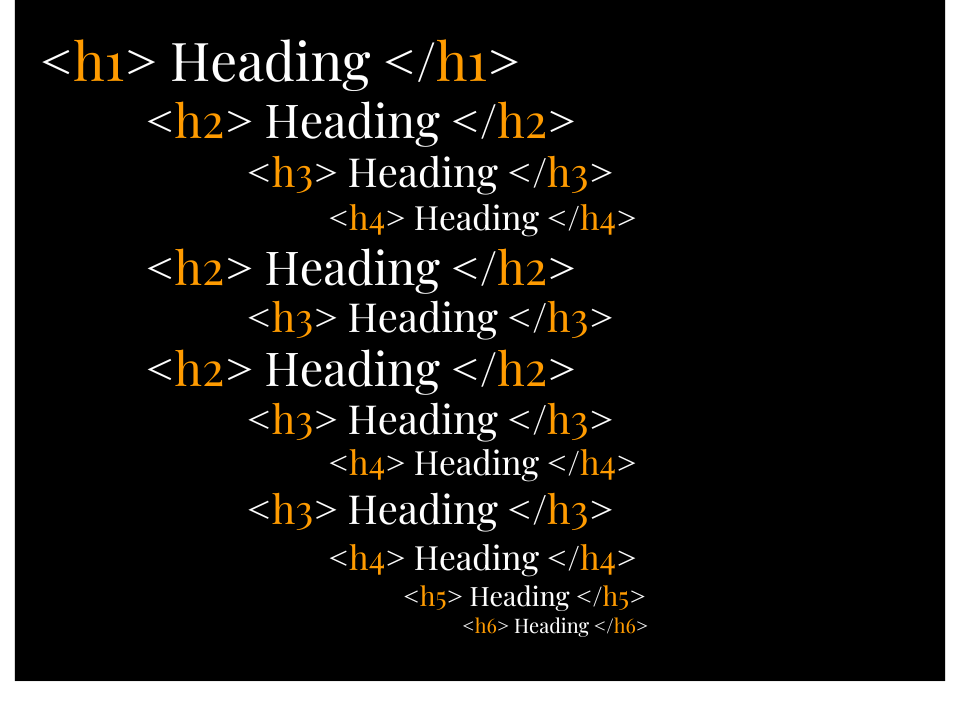When it comes webpages, headings are a critical element. Headings, or H tags, are used in the body of a webpage. The H tag pairs with a hierarchy of numbers and letters — such as H1, H2, H3. H tags are used to provide structure to the page and to make it easier for people, as well as search engines, to read.
For website visitors, headings make it easier to scan the page for information. The use of H tags breaks up content and outlines what the page is about. The hierarchy of the tags also helps to find sub-topics that are related to the main subject.
H1 – H6 Tags
There are several different types of H tags ranging from H1 to H6. The most important tag is the H1 which acts as an overall title for the page. Additional H tags provide structure and clarity to the content of the page.
A specific and numerical order of H tags should be used for each webpage. For example, each webpage should have an H1 tag. H1 tags should only be used once per page. H2 tags are used for subheadings within the main text beneath the H1 heading. H3 tags are used for subsections within the H2 subheadings, and so on with H4-H6 tags, creating a natural hierarchy. When choosing which H tag to use, it is important to consider both the importance of the heading and the hierarchy level.

It is important to keep track of how the H tags are distributed. Duplicate or missing tags can negatively impact the ranking and readability of a webpage. For instance, if the same H2 tag is used too often on the page, search engines may not be able to distinguish between them. Or, if the page starts with an H3 tag followed by numerous H2 tags, search engine crawlers are going to struggle with reading the page as there is no H1 tag and the other tags are out of order. Out of order or missing H tags may not be obvious to the human eye due to how the webpage is designed, but messy H tag usage can affect how search engines crawl and index the page.
H Tags and SEO
From a search engine optimization (SEO) perspective, H tags help search engine crawlers identify the most important pieces of content on a webpage and inform the search engine what the page is about. To this end, H1 tags are given the highest value with the other H tags ranking in order of sequence.
H tags should be descriptive and should summarize the main points. For example, if a piece of content is about the benefits of a product, the heading could be “Benefits of Our Product”. Including your specific product name and related keywords in the headings also helps the content be properly indexed. Furthermore, search engines analyze the content before and after H tags. They do this to get a clear understanding of what the page is about so it can be indexed accordingly.
Proper use of H tags can ensure that the structure of the page is efficiently indexed by search engines, and that the contents of the page can be easily understood by readers. This also helps to maximize your page ranking in search engines so more people find your website. By following these guidelines, you can rest assured knowing that this major component of website optimization is covered.